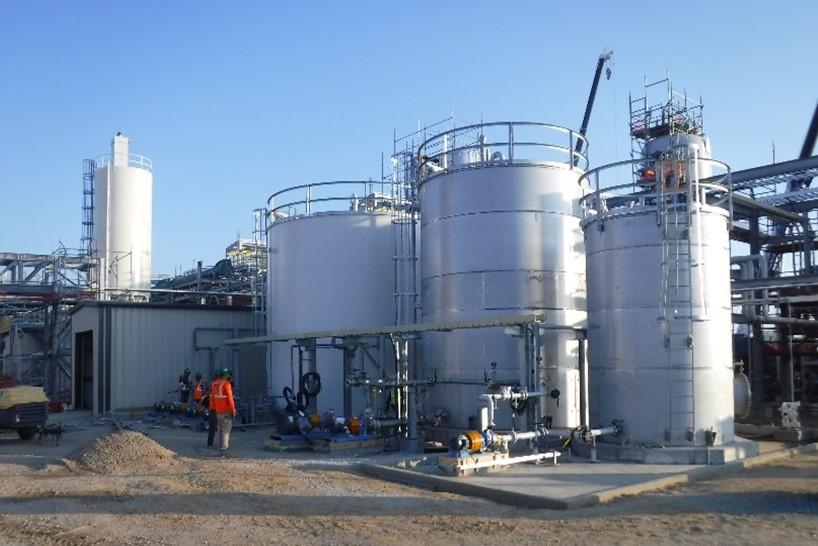While Australia and its critical-minerals partners agree that supply-chain diversity, security and sustainability are essential, inconsistent national policies continue to inhibit the development of the end-to-end supply chains they seek. In the dynamic landscape of at-risk supply chains, harmonising national policies has emerged as a key factor for achieving shared goals.
If industrialised nations are to assure their critical-minerals supply chains and if Australia is to reap the economic benefits, they must move quickly to ensure greater policy harmonisation between partners.
That alignment is not merely a matter of regulatory conformity but a strategic imperative to foster collaborative frameworks and bolster friendshored minerals development and supply security. It is also not just about changing Australian policies but also finding ways in which supply-chain partners can achieve greater synchronisation and mutual benefits.
For Australia and its partners, critical-minerals security is driving a plethora of policy initiatives, many with significant financial allocations behind them. To date, however, neither national policies nor funding facilities always harmonise to deliver secure critical-minerals supply chains. Sometimes, Australia’s and its partners’ policies diverge, presenting obstacles to seamless integration and collaborative innovation. That discord is evident in several key areas.
While Australia and its partners have endorsed initiatives to develop a global network of critical-minerals supply chains, Australia’s policy framework remains focused on stimulating domestic production. That narrow scope limits the potential synergies created by integrated approaches that engage dynamic global supply and value chains.
The recent agreement between African nations and South Korea to collaborate on critical-minerals development and related initiatives such as infrastructure, backed by US$10 billion of aid to 2030 and US$14 billion of financing to South Korean companies, offers Australian and Canadian companies leverage. Together, Australian and Canadian companies generate nearly 60 percent of minerals exploration in Africa. The Canadian and Australian governments should work to assist their companies to access the opportunities generated. However, while Canada maintains 17 trade offices in Africa, Australia is limited by the downgrade of its trade offices to just one.
Disparities in the application of financial support for critical-minerals development highlight another area of difference. Some of Australia’s partners have implemented robust incentives to stimulate domestic and international investments in critical minerals. As Gracelin Baskaran of CSIS observes, however, the United States’ principal funding vehicle for development of minerals production outside the US, the International Development Finance Corporation (DFC), is restricted by legislation to making investments only in low-income countries. The DFC can’t, for example, invest in lithium projects in higher-income countries, including Australia, that combined hold 63 percent of the world’s lithium reserves. The DFC is severely restricted or prohibited from investing in nations, including Australia, that together account for 50 percent of the world’s graphite and 58 percent of nickel reserves.
While the US Export-Import Bank also finances critical-minerals projects to supply US manufacturers, there remains a project financing gap that is often filled by China, with resultant supply chains potentially triggering the Foreign Entities of Concern provisions of the US Inflation Reduction Act and severely restricting market access in the US.
The DFC has, however, extended concessional loan funding for the Australian-operated Balama graphite mine in Mozambique, while the in the US, operated by the same Australian company, has received loan funding from the US Department of Energy.
Meanwhile, Australia’s incentives do not always fully align with partners’ measures and, at times, work at cross-purposes. Export Finance Australia’s loan funding for critical-minerals production is restricted to domestic projects only; for example, a graphite refinery in Western Australia is being funded, but Australian-operated graphite mines in Tanzania, which will supply the refinery, are currently ineligible for support.
It remains to be seen how the road map to be developed under the recently signed critical-minerals agreement between the European Union and Australia and how the EU’s new Critical Raw Materials Act will result in harmonised policies and activities domestically and in third countries.
Partner policy initiatives may have strict incentive eligibility criteria. For example, the US Inflation Reduction Act has strict equity criteria for companies and projects seeking to qualify for assistance and tariff concessions. Of course, Australian incentives and measures should focus on providing developers with flexibility to implement the best arrangements for their projects. However, Australian policymakers ought to look for opportunities for companies to access the commercial and economic benefits of partner incentives, especially when they could optimise economic and security outcomes. Coordinated Japanese, Australian and US funding support for different components of the Lynas Rare Earths supply chain is a prime example of how that can be achieved.
Australia and its partners have mutually committed to developing both secure and sustainable critical-minerals supply chains. However, there remains a notable absence of universally agreed-upon standards, particularly concerning sustainability practices. Harmonised policy efforts are needed to establish and maintain norms that uphold environmental stewardship, social responsibility and good governance across all stages of supply chains.
Australia can adopt several strategic approaches to enhance alignment with international supply-chain objectives.
First, as a prominent player in global mining, Australia has an opportunity to spearhead the adoption of comprehensive sustainability standards for supply chains. Supporting and endorsing standards, such as those being developed through the industry-led Consolidated Mining Standard Initiative, can position Australia as a leader in responsible resource production at home and abroad.
Second, Australia should overhaul its policies in order to support unequivocally a diverse global network of end-to-end friendshored supply chains, originating in Australia and elsewhere.
Third, Australia should encourage its supply-chain partners to implement coherent finance mechanisms, adjust its own to harmonise with them, and incentivise corporate equity and finance structures that comply.
Geopolitical uncertainty and an increasing greying of the line between security and trade ensure that secure and resilient supply chains, especially for commodities such as critical minerals, will only increase in importance. Harmonising Australian critical-minerals policies and those of its supply-chain partners is not merely a matter of alignment but a strategic imperative.


